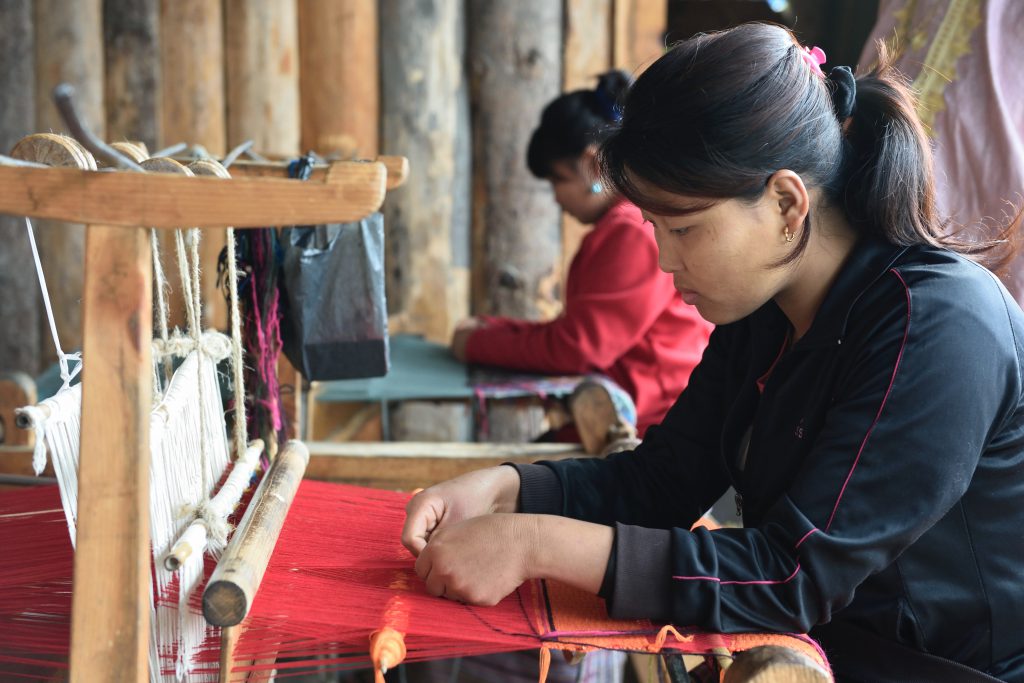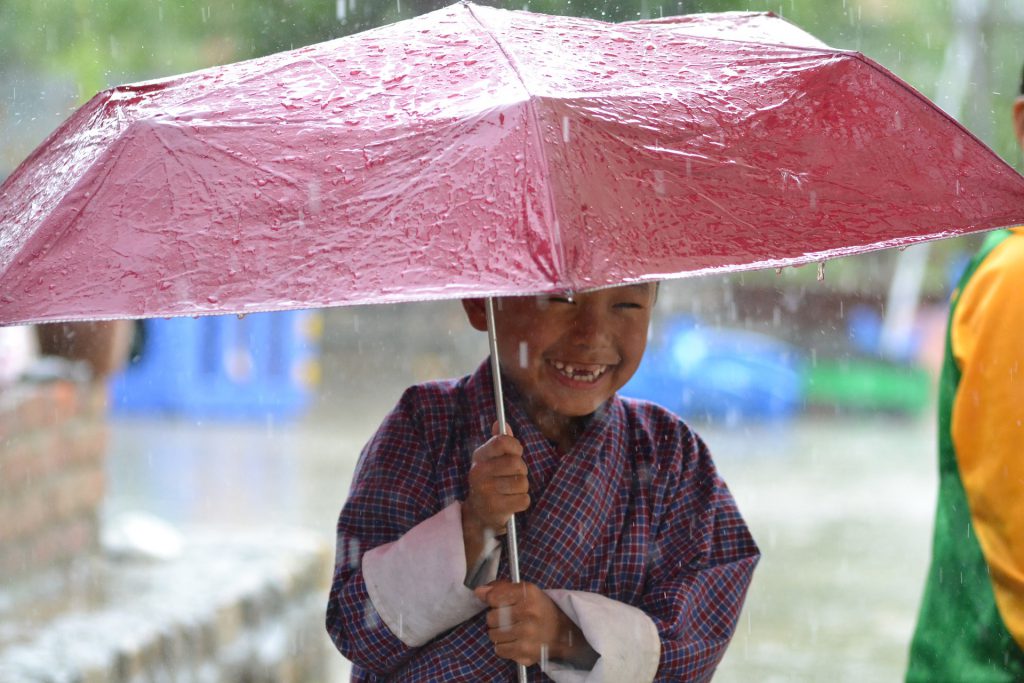Bhutanese culture is one of the distinctive cultures in the world. As a tiny country with a very small population the need to preserve culture and tradition is amplified. This unique culture is a means of protecting the sovereignty of the nation. The distinctiveness of the culture and tradition is visible in the everyday life of the Bhutanese. This unique culture is a means of protecting the sovereignty of the nation.  The distinctiveness of the culture and tradition is visible in the everyday life of the Bhutanese. It is time for you to explore the rich culture and tradition of Bhutan. You are lucky to be here.
The distinctiveness of the culture and tradition is visible in the everyday life of the Bhutanese. It is time for you to explore the rich culture and tradition of Bhutan. You are lucky to be here.
Bhutan is a country where smokers are taxed; where people pay more importance to Gross National Happiness than Gross National Product and where giant protective penises are painted on the walls of most houses.


Traditional Festivals
One of the most colourful festivals in the Bhutanese calendar is the Tshechu performed in all the Dzongs and in many monasteries and temples spread throughout Bhutan. Tshechu is a mask dance festival to commemorate the events in the life of Guru Rinpochoe who is revered as the festivalsecond Buddha in Bhutan. There is also a display of Thongdrol, large scroll paintings of deities and saints which have the power to liberate people from sin that they had committed just by seeing it. People gather from all walks of life to witness this significant event. There are many other festivals distinct to different villages which are mostly animistic in nature performed by mediums. The festivals are moment for social get-together where people wear their finest clothes and jewelleries.
Birth
The birth of the child is always welcomed without gender discrimination. The outsiders, normally, do not visit the child for first three days as the house is considered polluted by kaydrip (defilement by birth). Thus, a purification ritual (Lhabsang) is conducted in the house, after which the outsiders come to the house to see the new born baby. Gifts are brought for the new-born and the mother. The gifts range from rice and dairy products in the rural places to clothes and money in the urban.
The child is not immediately named. Generally, the names are given by religious person. The child is also taken to the temple of the local deity (natal deity) and the name associated with the deity is given. In some cases, the child is given the name of the day on which the child is born. The horoscope of the baby known as kyetsi is written based on Bhutanese calendar. It details out the time and date of the birth, predicts the future of the child, rituals to be executed at different stages in the life of the child as remedy to possible illness, problems and misfortune.Traditionally, the culture of celebrating birthdays did not exist. However, it has now become popular especially amongst the town and city dwellers.

Marriage
Arranged marriages were popular just a few decades back. Normally, people married among the relatives. For instance, particularly in eastern Bhutan, cross-cousin marriage was a popular tradition. This is now becoming unpopular among the literate mass and most of the marriages take place based on their own choice.
Marriages are conducted in simple ways. A small ritual is performed by a religious person. However, in some cases dinner parties are organized. The parents, relatives and the friends present scarves (kha-dar) to the couple along with gifts in the form of cash and goods in most cases during the ritual.
In the western part of Bhutan, the husband goes out to the wife’s house after marriage while in the eastern Bhutan it’s just the reverse. This practice is however not mandatory. The new couple may set up their own household on their own plot of land. Divorce is accepted in the Bhutanese society and carries no stigma. The divorced couple in most situations remarries with new partners. However, compensation is paid by the party seeking separation.
Funeral
Death is the most expensive affair as it does not mean the end. On the contrary, it is merely passing on to another life. Thus many rituals are performed to help the departed soul get a better rebirth. Rituals are performed after the 7th day, 14th day, 21st day and the 49th days of the death. Cremations are done only on a favourable day prescribed by the astrologer but in habitually before the 7th day ritual. Elaborate rituals are also conducted on the death anniversary for three consecutive years with erection of prayer flags in the name of the deceased. The relatives and people of the locality come with alcohol, rice, or other sundry items to attend these rituals.
Dress
The traditional dress of Bhutan is one of the most unique in the world. Men wear gho, a long robe that is raised till knee, folded backwards and then tied around the waist by kera, a belt. Traditionally, the pouch formed above the waist is used for carrying bowl, money and doma (areca nut and betal leaf eaten with a dash of lime). Men generally insert a knife in the belt from inside the pouch. But the dress for the tribal and semi nomadic people like the Bramis and Brokpas of eastern Bhutan and the Layaps of western Bhutan have a unique dress of their own and do not wear the gho and Kera. The Brokpas and the Bramis wear a dress made of yak hair and sheep wool with an animal skin over it and a hat with five fringes hanging from the sides. While the Layap men dress Gho the women dress differently with a loose outfit that reaches their calves. The dress is again made of yak hair. On the head they put on a conical bamboo hat. On formal visits to a Dzong or an office, Bhutanese men wear a scarf called kabney. Wearing of kabney is an important part of the Bhutanese decorum and should be put on in a right manner. The kabney also identifies the rank of a person. For instance, the King wears the yellow scarf, minister’s orange, judge’s green, and district administrator’s red with a white band going lengthwise and common people white with fringes etc. Women on the other hand wear a rectangular shaped cloth piece called kira. It is tied by belt. However women wear their kira long till their ankle. Women also wear the scarf called rachu. They hang it over their shoulder and it is beautifully hand woven with fringes at the end. It is smaller than a kabney.



Eating habit.
Bhutanese eat with hands. Eating with spoons is an imported culture. The family members sit on the floor in a circle and the mother serves the food. Most of the Bhutanese still use trafoodditional plates made of wood (dapa/dam/dolom) and bamboo (bangchungs). Before eating they toss some morsels of rice in the air as offering to the deities and spirits. The favorite Bhutanese dishes are Ema Datsi (chili with cheese), Paa (sliced pork and beef) and red rice. No dish goes without chili. People also drink salted butter tea (suja) and alcohol. Doma (betel leaf and areca nut eaten with a dash of lime) is also carried by many in their pouch. Offering of Doma to someone is an act of friendship, politeness and a mark of generosity.